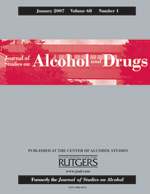The objective of this study was to see whether levels of alcohol consumption newly included as "moderate" in proposed changes to the 2010 Dietary Guidelines for Americans are associated with significant levels of alcohol-related harm.
Using longitudinal data from a nationally representative sample of U.S. adults (N = 26,438; 51.8% female), we compared relative risks and population attributable fractions for nine measures of concurrent and eight measures of prospective alcohol-related harm among three groups of drinkers: those whose consumption lay within the old 2005 Dietary Guidelines for Americans guidelines for moderate drinking, those in the "gray area" of consumption between the 2005 and proposed 2010 Dietary Guidelines for Americans, and those who exceeded the proposed 2010 Dietary Guidelines for Americans.
The gray area of consumption was associated with small but significantly increased risks of prevalent and incident alcohol dependence, incident alcohol-related interpersonal problems, and prevalent job loss. There were no associations with medical conditions or mental disorders. Although the harms associated with this level of consumption reflected low absolute and/or relative risks of harm, their impact was not negligible because of the large proportion of drinkers in the gray area of consumption (29.1%).
The overwhelming majority of incident harm among baseline gray area drinkers was associated with consumption that had increased over the follow-up interval to exceed the proposed 2010 Dietary Guidelines for Americans.
We recommend two alternative approaches to rewording the proposed changes to the 2010 Dietary Guidelines for Americans that would avoid suggesting that there are benefits associated with the gray area of alcohol consumption.
We recommend two alternative approaches to rewording the proposed changes to the 2010 Dietary Guidelines for Americans that would avoid suggesting that there are benefits associated with the gray area of alcohol consumption.
